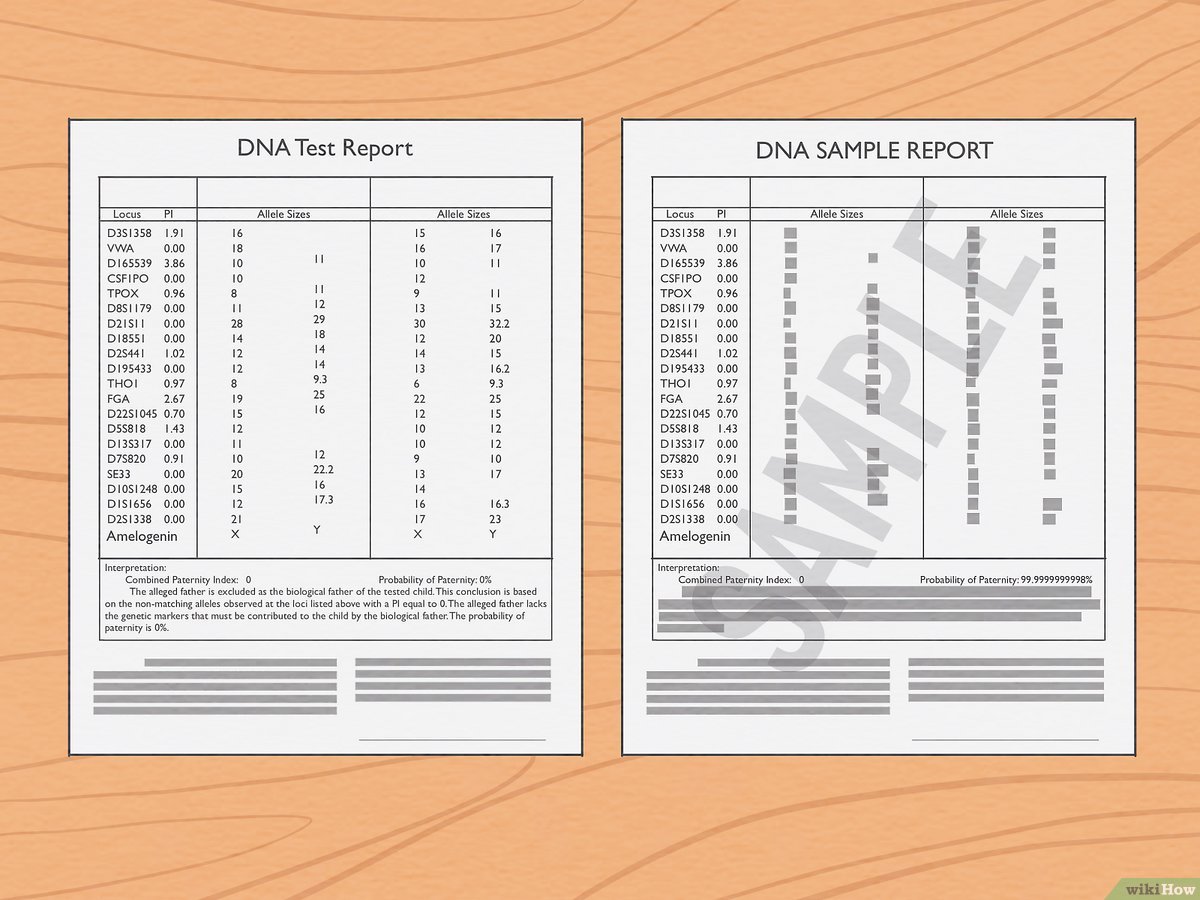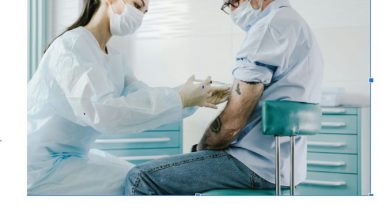
How To Spot A Fake DNA Test Results: It makes sense to be wary if you have a gut feeling that someone is attempting to deceive you by presenting you with bogus paternity DNA results. We’ve got your back, even if even fabricated results might be challenging to read and comprehend for the average individual. We’ll teach you how to interpret the findings even if they are true, so you don’t have to take our word for it. There are several red flags that suggest DNA results may be fake. Relax; you’ll understand the meaning of the findings quickly. Enough Info

Read Also: How To Deal With Anxiety(2023)
FAQs & Answers
What are some signs that a DNA test result might be fake?
Some signs that a DNA test result may be fake include discrepancies between the results of different types of tests, inconsistencies between the results and family or medical records, or results that appear to be too good to be true. Additionally, if the company offering the testing is not reputable or certified, this could be an indication that the results may not be accurate. How To Clean Dyson Airwrap Filter( Step by Step)
How can you tell whether the kid is really yours?
DNA paternity testing establishes a child’s biological father, according to the business. Half of our DNA comes from our mother and half from our father, who is our biological parents. In order to ascertain if there is a match between a child’s DNA pattern and the putative father’s, a DNA paternity test is performed.
What may invalidate a DNA test?
DNA Collection Cross-Contamination. handling the swabs’ soft ends. swabs being dropped. allowing the heads of swabs from two separate individuals to come into touch. putting two swabs from different individuals in one envelope. How To Stop Bleeding (2023 Home Remedies)
Such expressions like “Positive” or “You are the father”
Neither “you are the father” nor “you are not the father” will ever appear in the findings. The combined paternity index will provide a comprehensive assessment of whether the findings are favorable or not. It won’t, however, be “positive” or blatantly state “you are the parent.”
- “Inclusion,” “Blessed is not excluded as the biological parent,” or anything like that may demonstrate your relationship to the child.
- The result should be “Blessed is not identified as a biological parent” if you’re not the child’s parent.
- If you’re sure the right people provided the sample, DNA paternity tests are 99.9% accurate, so don’t ignore the results (s).
Read Also: How to be a Medical Doctor(Step-and Requirements)
Combined paternity index of 100%
Legitimate DNA testing can never be completely certain of anything. A 100% result is probably bogus since a DNA test cannot determine with absolute confidence that two people are related, just that the chances are very, extremely high. It could, however, provide a 0% outcome.
- The CPI is a measure of how likely it is that one test taker is linked to another. There is no way to establish with 100% confidence that two persons are related since identical twins do occur.
- The highest possible CPI is 99.9999999998%, however, most DNA testing won’t provide results with that much precision. How To Reduce Nose Swelling(2023Guide)
Mismatching allele inclusions
There should be enough matched alleles to support the conclusion and CPI. A DNA test really consists of a series of several smaller examinations of various loci, or DNA markers. You need to locate at least one allele that matches your DNA for each locus (it may mention “gene” or simply give the name of the locus) for it to be a match. After counting the matches, compare the results to the CPI to get a conclusion. For instance:
- A gene variant is known as an allele. A kid born to you and your partner will inherit 1 allele from each of you and 1 allele from the other parent.
- So a kid might have alleles 12 and 20 for one locus. It may be assumed that if you have 20 and 14, your kid inherited the 20 alleles from you. This will burn. It wouldn’t match if you had 17 and 14, for example.
- Count the matches by going through each row. Compare the conclusion and CPI to the overall number of matches.
- The CPI should be 99.99% or above and the conclusion should include “inclusion” if you have 15 out of 15 matches.
Read Also: How to Build Healthy Bones (Top Strategies: 2023)
Several unmatched matches
One missed match doesn’t always mean you aren’t related. Contrary to popular belief, two persons who are closely related often do not share all of their alleles. If a few alleles don’t line up exactly, don’t assume you aren’t related since genes may change. In most circumstances, for a test to conclusively rule out a father, there must be a minimum of four non-matching loci.
- In other words, a CPI of about 40% and a result of 13/15 matching alleles do not always imply that you are unrelated to the individual. How To Dispose Of Helium Tank(2023)
Mismatch with the sample report
Request a sample report from the lab and contrast it with your own. Ask for a sample report if the lab that purportedly verified the test won’t admit to testing your DNA due to legal concerns. Compare your report to the sample. Assume the test is valid if the letterhead, formatting, language, and visuals are all functionally the same.
- Numerous DNA testing facilities provide sample reports that guide you through how to read the findings.
- Quest Diagnostics and LabCorp, the two major DNA testing businesses in the US, both provide samples of their findings upon request.
Lacking letterhead or using an unapproved lab
Verify the report’s validity by contacting the lab listed on the letterhead. The findings have to include letterhead that identifies the location of the test’s execution. Confirm the test was performed by getting in touch with the lab. Then, check the lab’s accreditation and licensing status online. Every nation will have its own licensing agencies, but every lab has to be approved by the government.
- The AABB (American Association of Blood Banks) and/or CAP should have granted the lab a license in the US (College of American Pathologists).
- The findings from a lab are less likely to be reliable or genuine if they have no source and/or the facility is not certified. How To Manifest Someone To Be Obsessed With You(2023)
Read Also: How To Heal A Broken Heart(A Guide2023)
Bad quality of the report
The report from a trustworthy DNA lab will be neat, succinct, and devoid of mistakes. You have every reason to be cautious if you have a 30-page DNA test that is riddled with errors. Most DNA paternity tests are between two and three pages long, with many charts showing your alleles and loci as well as those of your child’s other biological parent (if included).
- Many fathers or multiple mothers won’t appear in any DNA test. There will always be one mother, one kid, and one father. The findings are very probably bogus if you see more than one kid or father mentioned.
Instantaneous turnaround
Be wary if the findings are delivered in less than 48 hours. These things take time unless a court order expedited them. It takes a long time for a laboratory to go through and examine each locus, and it’s unusual for a result to be available in less than a day. Consider the findings to be suspect if they are provided to you by a source other than a court or lab within two days. How To Trick A Mass Air Flow Sensor(2023Tips)
Conclusion
Spotting a fake DNA test result requires careful examination of the results, checking for any inconsistencies in the data, verifying the laboratory results with the laboratory itself, and looking for any evidence of tampering. It is also important to ask questions about how the testing was conducted, including what type of sample was used and how the samples were collected. Finally, it is important to explore all available resources to verify the results. How To Make Bleached Hair Soft And Silky
Read Also: How To Break The Cycle Of Performance Anxiety




